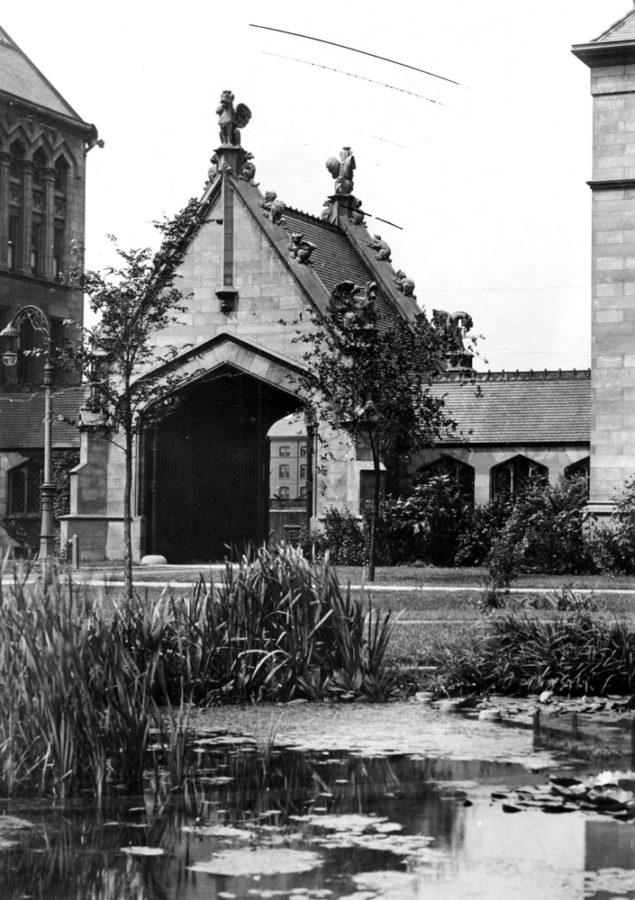From first-years to graduate students, there is a widely circulated myth that Hyde Park is an exceptionally unsafe neighborhood. We certainly see a lot of daily evidence as to this danger. Campus street corners seem to have more security and police patrol cars than most military installations. CTA bus drivers often remind students to keep their phones hidden while on the bus. A number of violent, high- profile robberies during the last year made it into both the Maroon and even Chicago Tribune pages. And let’s not forget Chicago’s nationally publicized 506 (or 513, depending on your source) murders in 2012, many of which occurred only a few miles from Cobb Hall. Between these constant reminders of imminent peril, it is no wonder that University members live with such crime anxiety. Fortunately, this fear is almost entirely unfounded.
As many students know, the University and Hyde Park are actually some of the safest places in all of Chicago, let alone on the South side. There are many factors contributing to this, including the exceptional officers of the University of Chicago Police Department (UCPD), high property values, low poverty and demographic diversity. This reality is often obscured by the constant export of tragic, violent stories from surrounding communities, many of which do suffer from extreme crime rates. But according to Chicago Police Department (CPD), over the past five years, Hyde Park had one of the lowest occurrences of violent crime in any Chicago neighborhood.
As an example, consider 2008, the most recent year in which Chicago surpassed the grisly 500-homicide mark. Hyde Park had a violent crime rate of 558 per 100,000 residents. By comparison, the citywide rate was more than twice as much, at 1,263 per 100,000 Chicagoans. Of course, then there were nearby communities, many of which experienced a different sort of violence entirely, one far more tenacious and constant than we are accustomed to in Hyde Park. Take for example Woodlawn (1,904), Washington Park (3,138), and Englewood (5,405)—just a snapshot of “the other Chicago” that lies beyond our borders.
Trends over time tell a more complete story than just yearly snapshots, and that is as true of crime data as any other field of social science. The UCPD reports that Hyde Park violent crime steadily declined for the past decade. But did this trend continue into 2012, a year that saw awful spikes in violence across the rest of Chicago? Were Hyde Park and the University affected?
To answer this question, I looked at UCPD and CPD crime logs from 2011 and 2012. Although the data sets have overlaps in reported crime, there are often big differences; incidents called in exclusively to the CPD do not show up in UCPD reports, for example. This meant it was possible that UCPD and CPD data showed different stories about what happened in these two years. Because violent crime is so uniquely harmful to victims and a community, I only looked at robbery, battery, assault, and murder. Property crimes, although damaging, just do not cause the same sort of profound trauma.
In the end, both sources were in agreement: Hyde Park has gotten a whole lot safer from 2011 to 2012. According to the UCPD, there was a 12 percent decrease in Hyde Park violence, from 103 incidents in 2011 to 91 in 2012. The CPD, with a more comprehensive set of reported crimes, reported 758 incidents in 2011 but only 537 in 2012, a whopping 29 percent decrease. Admittedly, some readers might be very alarmed by these raw numbers, totals that still seem high. To put them in context, consider the hyper-affluent Gold Coast on the city’s North Side, a neighborhood that is widely acknowledged to be the safest community in the city. In 2011, the Gold Coast recorded 502 violent incidents, with 404 in 2012. These numbers are right in the range of Hyde Park’s, proving not only how safe our South Side home is, but also that it remains one of the safest places in Chicago.
Despite these statistics, our University is still in an urban area. Crime still occurs, especially violent crime. As head instructor in the UChicago Self-Defense Club, I always remind my students to remain vigilant and aware, even though crime in our area is thankfully so low. For those who are the victims of crime, these probabilities and percentages are little consolation. But for most students, alumni, applicants, professors, and Hyde Park community members, the facts about local crime are very heartening. In light of these findings, let’s all make a collective resolution in this new year to stop preaching the myth of UChicago and Hyde Park crime and danger. Also, returning to those wise CTA drivers, let’s actually put those iPhones and handheld devices away when we are in transit, whether walking or bussing.
Sheridan Lardner, A.B. ‘11, is a graduate student in the School of Social Service Administration.







